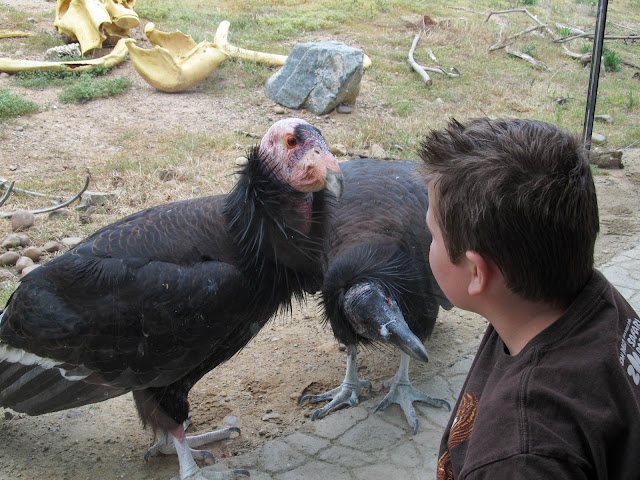The California condor is in the vulture family and at one time, not too long ago, was teetering on the brink of extinction. Once widely spread throughout the western United States and Mexico, in 1982 the number of California condors dwindled down to only 22 in the wild.
In 1982, San Diego Zoo Global was given permission to start the very first captive breeding program for the California condor. At the time, this was quite controversial because eggs were being removed from the wild. Well, all controversy aside the captive breeding program was put into motion.
Just this week, three of the four original eggs that were the first to be hatched celebrated their 30th birthday at the San Diego Zoo Safari Park. These three condors, Saspe, Sisquoc, and Almiyi helped form the foundation of what we know as the condor recovery program.
“What ugly buzzards”
“Freaks!”
And my personal favorite … “Why would anybody want to have this at a zoo?”
 |
| Dylan having a conversation with the California condors at the San Diego Zoo |
Obviously these people are uneducated and unable to see the beauty of these birds. Rather than put down the California condor for its appearance and the folklore that has given them a bad name, these people should be thankful. Thankful to San Diego Zoo Global for starting the condor breeding program. Thankful that they are able to see a California condor in real life instead of just a picture in a book listing extinct animals.
San Diego Zoo Global stated that the Safari Park has hatched over 170 chicks and released more than 80 birds in the wild. Currently there are now more than 400 condors, more than half of which are flying free in California, Arizona, and Baja California, Mexico. That is a far cry from the 22 California condors in 1982.
A prime example of how together, we can make a difference and bring a species back from the brink of extinction.
To learn more about the California condor and the condor recovery program you can visit the San Diego Zoo Global Wildlife Conservancy Success Stories page.




No comments:
Post a Comment